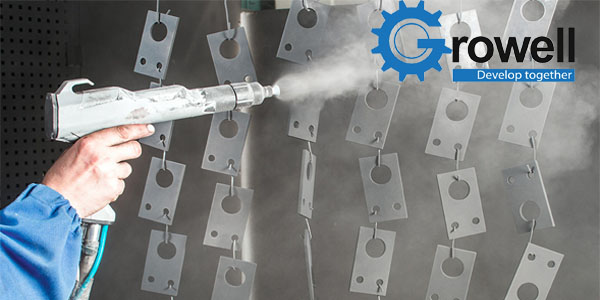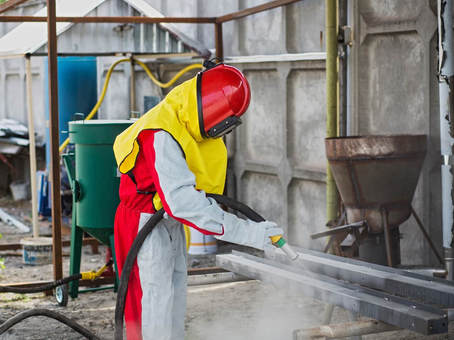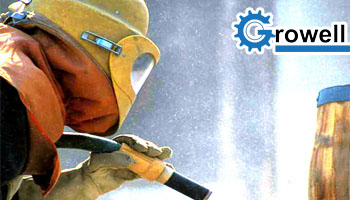News
Sandblasting: Guide to Safe-handling
Sandblasting is incredibly useful, but also be incredibly dengerous if not done properly. If you don’t take the proper safety precautions needed while sandblasting, it can result in injury or even death. In this article, Growell VN will give you safety tips to advoid any injuries!

Health Hazards
Most people know that machinery is dangerous, and can cause fatal injuries if not used properly. However, people don’t always think about the long term health hazards of the materials that are being used. Over time, the materials can lead to the health problems – some minor, some fatal.
Abrasive sandblast creates large amounts of dust. This mixed with the surface being blasted can contain toxic materials that are hazardous to the worker’s health. For example, silica can cause silicosis, breathing problems and lung cancer. Slags such as copper and nickel can contain trace amounts of toxic metals such as beryllium or arsenic, leading to health problems as well.
The easiest and most important way to protect yourself from these health harzards is to use proper protective gear. Using protective gear can save you from a multitude of health problems, so always wear it even if the job will only take a few minutes.
Environment
It’s also important that you conduct your sandblasting in an isolated environment. It is recommended that you conduct the job in suction cabinets, shotblasting machine or blasting room. This will ensure that environment will not be contaminated by dust and saving sand due to dust collector system. When sandblasting, make sure that the area is clear of items and personnel besides ones who are conducting the operations.

Ventilation
Lastly, it’s incredibly important that the areas in which abrasive sandblast is taking place is properly ventilated. For example, if the sandblasting is taking place indoors, make sure that the area has general exhaust, local exhaust, replacement air and circulatory air methods. This will ensure that you have the primary ventilation systems in place and can ensure that the abrasive and toxic materials won’t linger after the job is finished.
When sandblasting, safety should always be the top priority. Even if effects aren’t immediate, if not taking the proper precautions, sandblasting can be extremely hazardous to your health. Take the necessary steps to make sure you and others around you are always safe.






